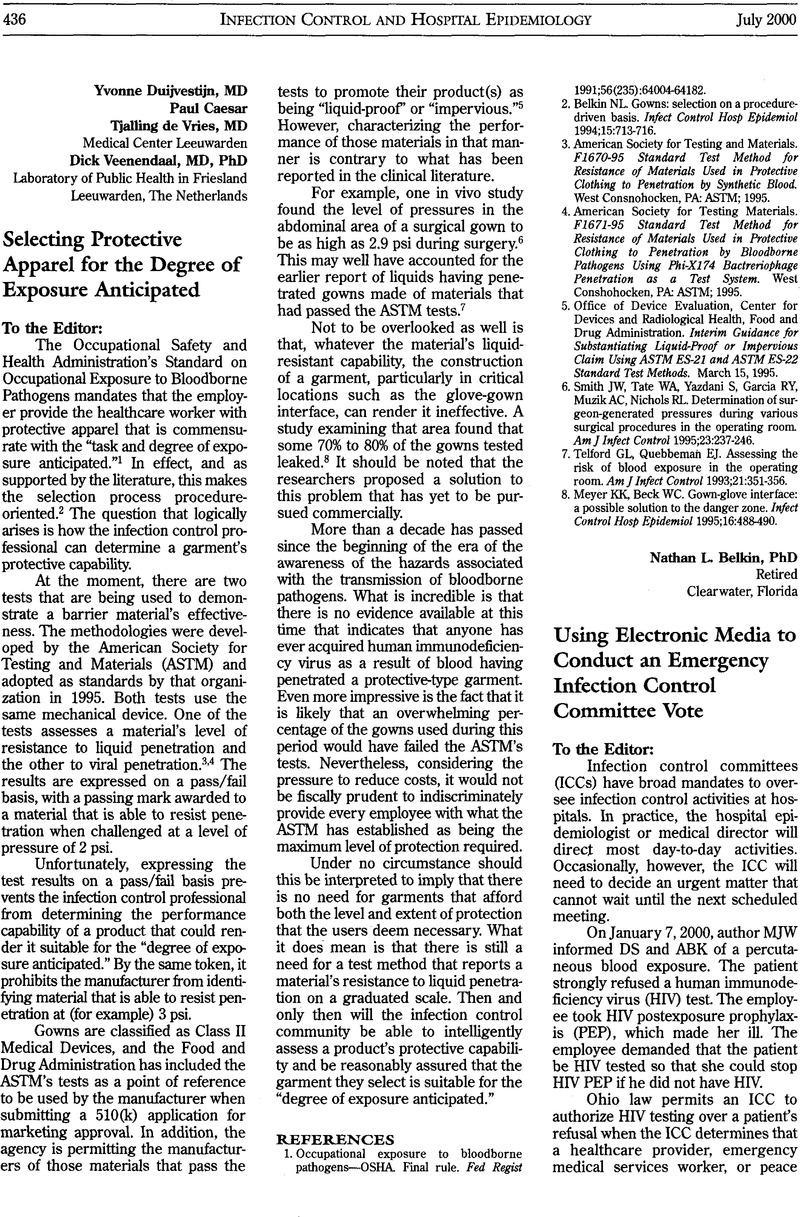Crossref Citations
This article has been cited by the following publications. This list is generated based on data provided by Crossref.
Kilinc Balci, F. Selcen
2016.
Isolation gowns in health care settings: Laboratory studies, regulations and standards, and potential barriers of gown selection and use.
American Journal of Infection Control,
Vol. 44,
Issue. 1,
p.
104.
Verbeek, Jos H
Ijaz, Sharea
Mischke, Christina
Ruotsalainen, Jani H
Mäkelä, Erja
Neuvonen, Kaisa
Edmond, Michael B
Sauni, Riitta
Kilinc Balci, F Selcen
and
Mihalache, Raluca C
2016.
Personal protective equipment for preventing highly infectious diseases due to exposure to contaminated body fluids in healthcare staff.
Cochrane Database of Systematic Reviews,
Verbeek, Jos H
Rajamaki, Blair
Ijaz, Sharea
Tikka, Christina
Ruotsalainen, Jani H
Edmond, Michael B
Sauni, Riitta
and
Kilinc Balci, F Selcen
2019.
Personal protective equipment for preventing highly infectious diseases due to exposure to contaminated body fluids in healthcare staff.
Cochrane Database of Systematic Reviews,





